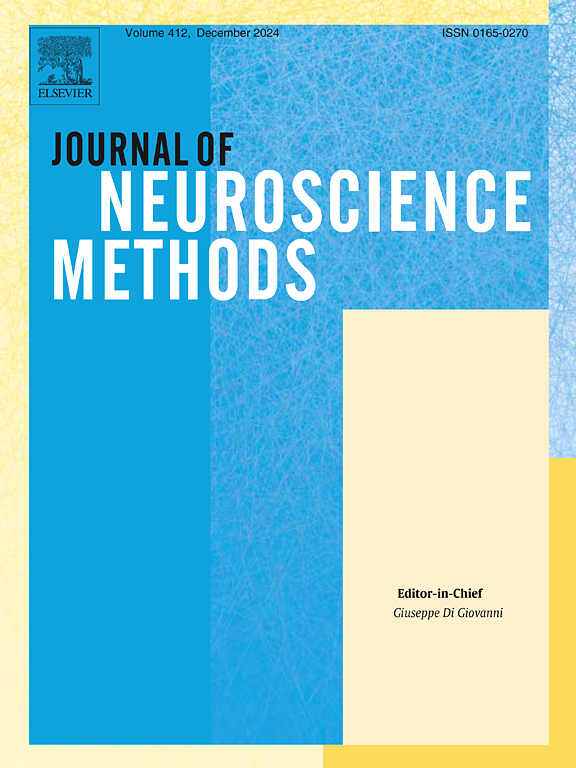Isolation, culture, and characterization of primary endothelial cells and pericytes from mouse sciatic nerve
IF 2.7
4区 医学
Q2 BIOCHEMICAL RESEARCH METHODS
引用次数: 0
Abstract
Background
The recovery of injured peripheral nerves relies on angiogenesis, where newly formed blood vessels act as pathways guiding Schwann cells across the wound to support axon regeneration. While some research has examined this process, the specific mechanisms of angiogenesis in peripheral nerve healing remain unclear. In vitro models are vital tools to investigate these mechanisms; however, no current in vitro culture methods exist for isolating vascular cells, such as endothelial cells (ECs) and pericytes, specifically from sciatic nerves.
New method
We developed a straightforward and reliable technique for isolating ECs and pericytes from injured sciatic nerves, optimized for use in in vitro studies. Cell types were characterized using specific markers and phenotypic assessments, with flow cytometry confirming cell identity and determining cell purity.
Results
Our method successfully isolated high-purity ECs and pericytes from injured sciatic nerves. Immunofluorescence analysis showed that primary cultured ECs exhibited strong positive staining for CD31, while pericytes stained strongly for NG2 and PDGFRβ. Flow cytometric analysis confirmed that ECs achieved a purity of 90.22 %, and pericytes reached a purity of 92.01 %. Both cell types were capable of forming organized capillary-like structures, and in co-culture systems, pericytes effectively wrapped around ECs.
Comparison with existing methods
Current isolation methods for ECs and pericytes from sciatic nerves are limited. Although techniques exist for isolating these cells from other tissues, they often rely on enzymatic digestion, which can damage cell surface proteins and reduce cell viability. Our method allows for the efficient isolation of intact ECs and pericytes from sciatic nerve tissue without such drawbacks, providing a robust platform for in vitro studies.
Conclusions
This newly developed method offers an effective approach to isolate ECs and pericytes from the sciatic nerve, contributing a valuable tool for investigating the function and pathology of angiogenesis in the context of sciatic nerve injury recovery.
小鼠坐骨神经内皮细胞和周细胞的分离、培养和特性分析。
背景:受损周围神经的恢复依赖于血管生成,其中新形成的血管作为引导雪旺细胞穿过伤口的途径来支持轴突再生。虽然一些研究已经检查了这一过程,但血管生成在周围神经愈合中的具体机制仍不清楚。体外模型是研究这些机制的重要工具;然而,目前还没有体外培养方法来分离血管细胞,如内皮细胞(ECs)和周细胞,特别是从坐骨神经中。新方法:我们开发了一种直接可靠的技术,用于分离损伤坐骨神经的内皮细胞和周细胞,优化用于体外研究。使用特异性标记物和表型评估来鉴定细胞类型,流式细胞术确认细胞身份并确定细胞纯度。结果:本方法成功地从损伤的坐骨神经中分离出高纯度的内皮细胞和周细胞。免疫荧光分析显示,原代培养的内皮细胞CD31阳性,周细胞NG2和PDGFRβ阳性。流式细胞分析证实,ECs纯度为90.22%,周细胞纯度为92.01%。两种细胞类型都能够形成有组织的毛细血管样结构,并且在共培养系统中,周细胞有效地包裹在内皮细胞周围。现有方法的比较:目前坐骨神经内皮细胞和周细胞的分离方法有限。虽然现有技术可以将这些细胞从其他组织中分离出来,但它们通常依赖于酶消化,这可能会破坏细胞表面蛋白质并降低细胞活力。我们的方法可以有效地从坐骨神经组织中分离完整的内皮细胞和周细胞,而没有这些缺点,为体外研究提供了一个强大的平台。结论:该方法为分离坐骨神经内皮细胞和周细胞提供了一种有效的方法,为研究坐骨神经损伤恢复过程中血管生成的功能和病理提供了有价值的工具。
本文章由计算机程序翻译,如有差异,请以英文原文为准。
求助全文
约1分钟内获得全文
求助全文
来源期刊

Journal of Neuroscience Methods
医学-神经科学
CiteScore
7.10
自引率
3.30%
发文量
226
审稿时长
52 days
期刊介绍:
The Journal of Neuroscience Methods publishes papers that describe new methods that are specifically for neuroscience research conducted in invertebrates, vertebrates or in man. Major methodological improvements or important refinements of established neuroscience methods are also considered for publication. The Journal''s Scope includes all aspects of contemporary neuroscience research, including anatomical, behavioural, biochemical, cellular, computational, molecular, invasive and non-invasive imaging, optogenetic, and physiological research investigations.
 求助内容:
求助内容: 应助结果提醒方式:
应助结果提醒方式:


